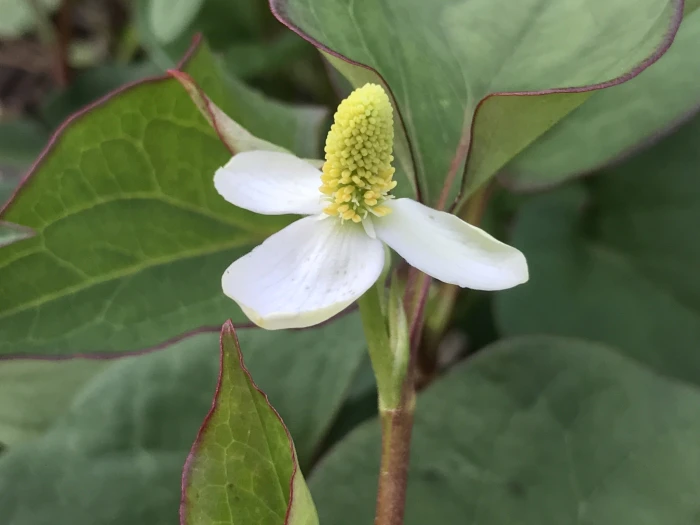Chameleon Plant
(Houttuynia cordata)
Chameleon Plant (Houttuynia cordata)
/
/

Yann Kemper
Public Domain










































































Estimated Native Range
Climate Requirements for Eustis, Florida
| This Plant | Your Site | Plant Suitability for Your Location | ||
|---|---|---|---|---|
| • Precipitation | 3" - 284" | 50" | Aquatic | Aquatic |
| • High Temp. | 61°F - 111°F | 91°F | Your summer temperatures are normal for this plant. | Excellent |
| • Low Temp. | -16°F - 69°F | 48°F | Your winter temperatures are normal for this plant | Excellent |
Summary
The Chameleon Plant is valued for its ground-covering ability and its vibrant foliage that adds a splash of color to moist garden areas. It is often used in bog gardens, around ponds, and in other water features. However, gardeners should be cautious as it can become invasive, spreading rapidly via rhizomes. It thrives in full sun to part shade and prefers consistently moist to wet soil with good drainage. While it can tolerate a range of soil types, it does best in rich, loamy soils. The plant has some medicinal uses in traditional Chinese medicine, but it is primarily grown for ornamental purposes. Potential problems include its aggressive growth habit, which can lead to it overtaking other plants in the garden.CC BY-SA 4.0
Plant Description
- Plant Type: Herb
- Height: 0.8-1.5 feet
- Width: 1-2 feet
- Growth Rate: Rapid
- Flower Color: White
- Flowering Season: Spring, Summer
- Leaf Retention: Deciduous
Growth Requirements
- Sun: Full Sun, Part Shade
- Water: High
- Drainage: Standing, Slow, Medium, Fast
Common Uses
Border Plant, Deer Resistant, Edible*Disclaimer: Easyscape's listed plant edibility is for informational use. Always verify the safety and proper identification of any plant before consumption., Fragrant, Groundcover, Rabbit Resistant, Water Garden
Natural Habitat
Wetlands, marshes, and damp forest edges in East Asia and the Himalayas
Other Names
Common Names: Fish Mint, Fish Leaf, Rainbow Plant, Chameleon, Heart Leaf, Fish Wort, Chinese Lizard Tail, Chameleon-Plant, Houttuynia, Moerasanemoon
Scientific Names: Houttuynia cordata, Houttuynia cordata var. variegata, Houttuynia emeiensis, Houttuynia cordata var. plena, Polypara cordata, Houttuynia chinensis, Houttuynia cordata f. polypetaloidea, Houttuynia cordata f. viridis, Houttuynia cordata var. cordata
GBIF Accepted Name: Houttuynia cordata Thunb.